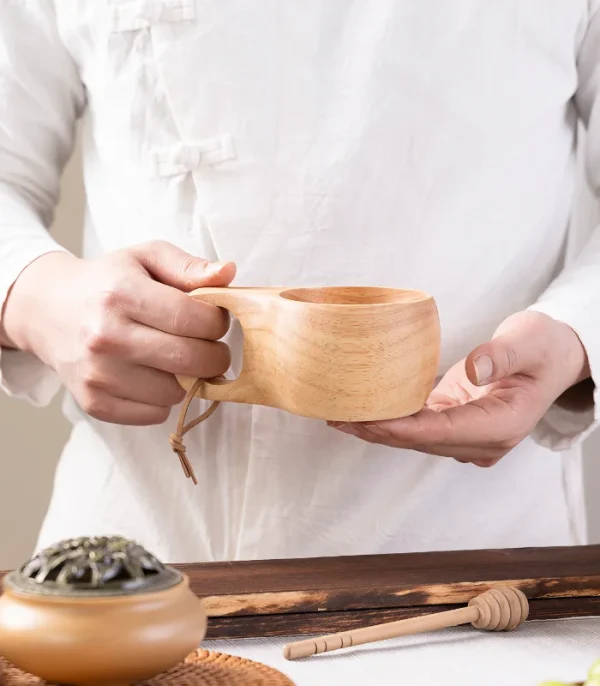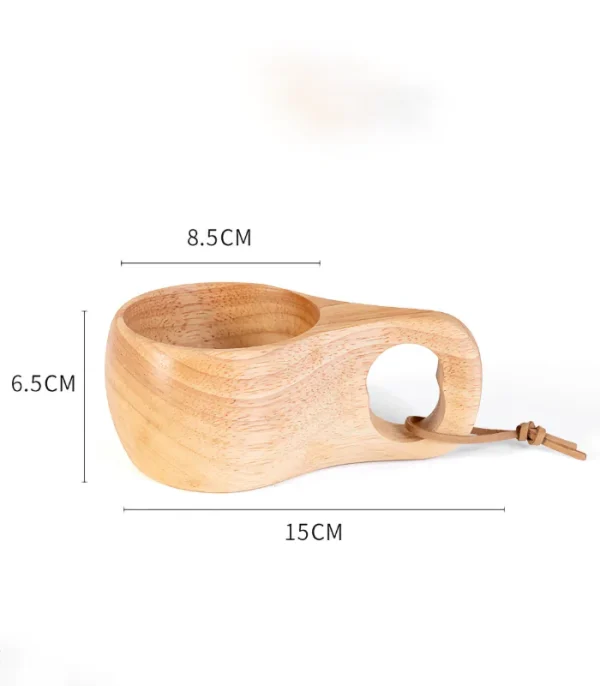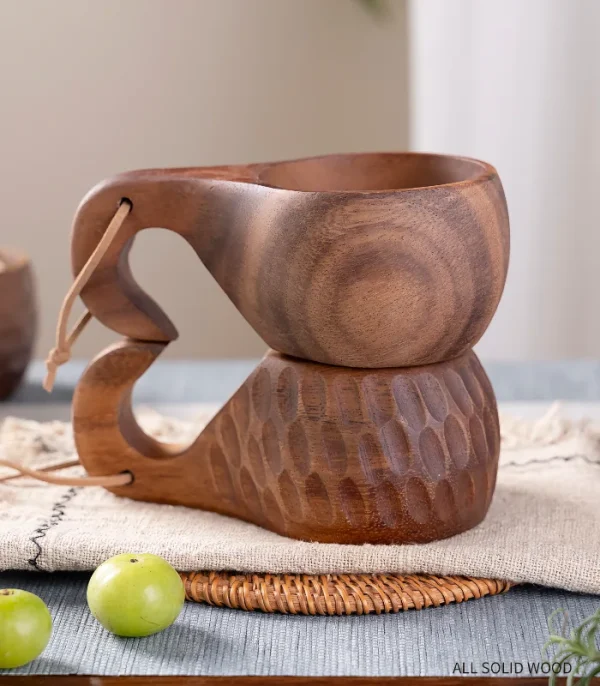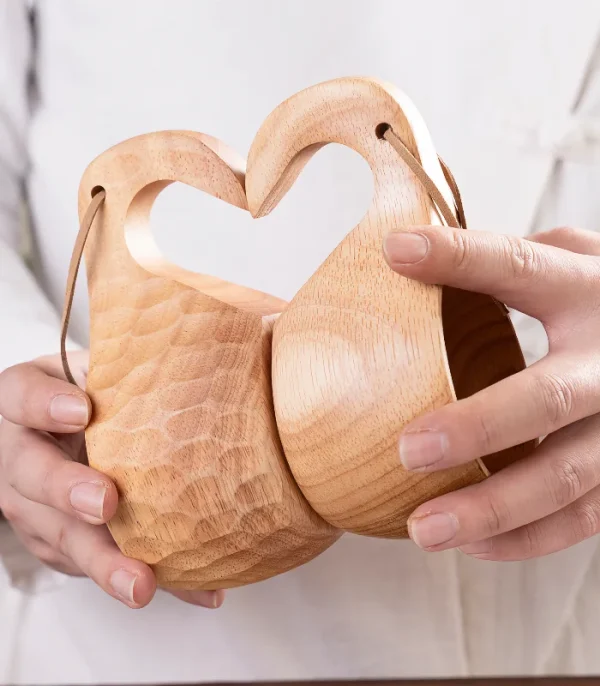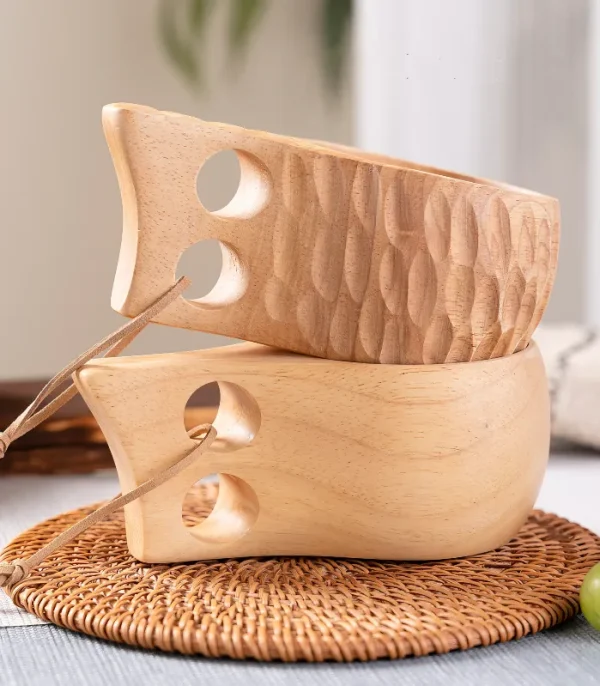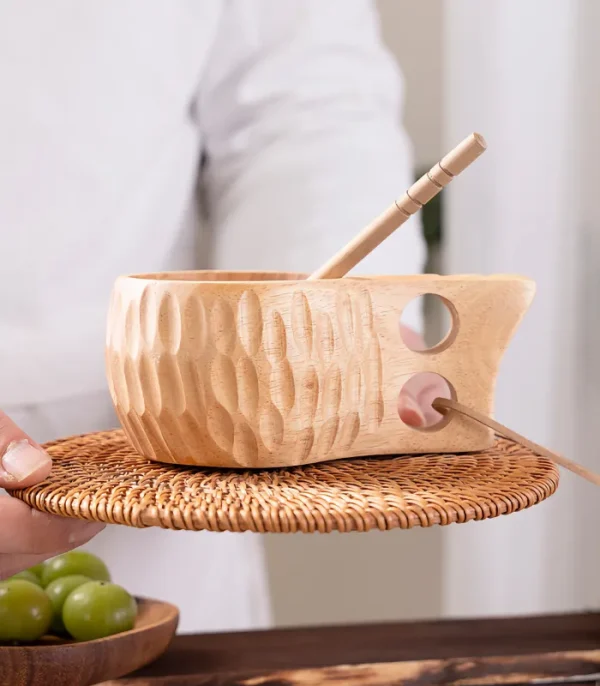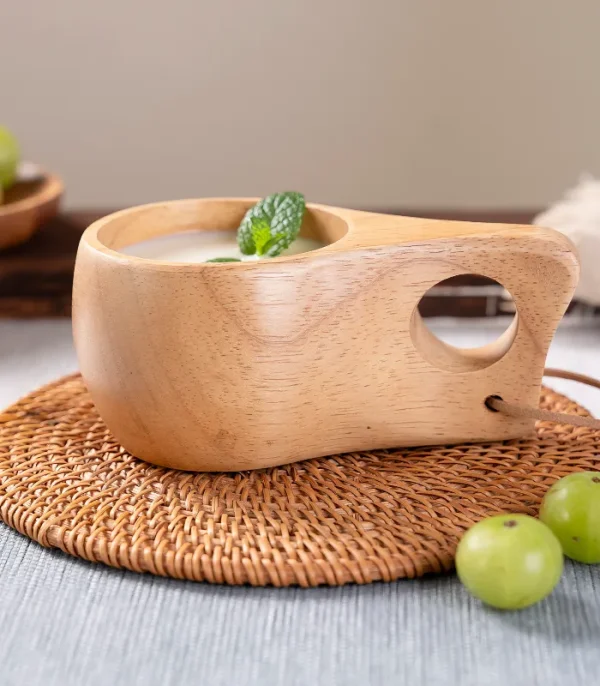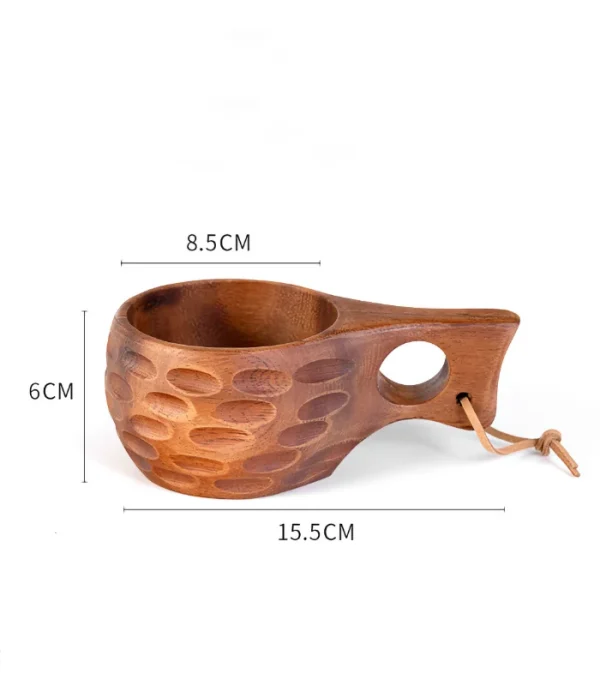This article introduces the history and culture of Kuksa cup, their modern uses, and maintenance methods, as well as recommendations for purchasing affordable and practical Kuksa cups.
Table of Contents
What is a Kuksa Cup?
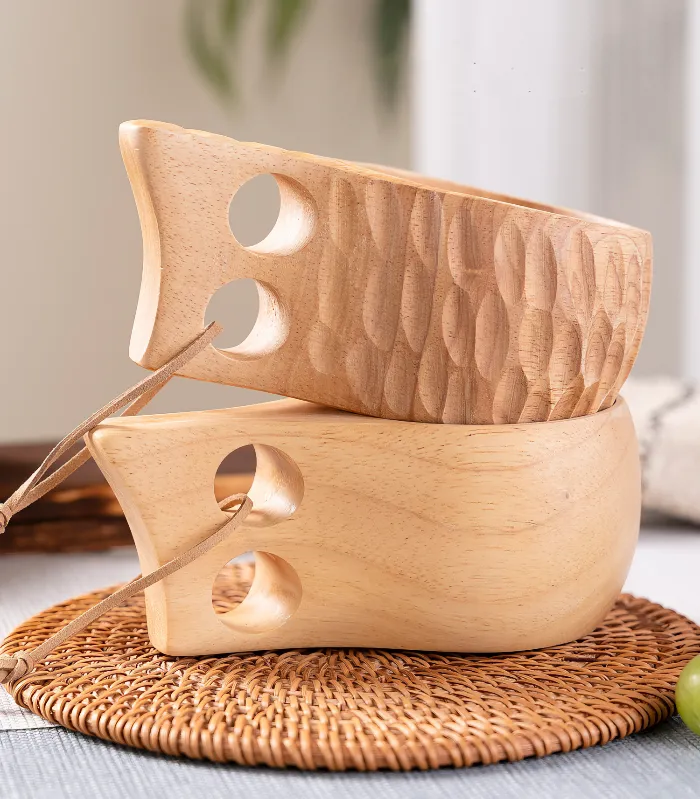
The Kuksa cup is a traditional wooden drinking vessel originating from the Sami people of Northern Scandinavia. It is not only a practical tool for drinking but also carries deep historical and cultural significance, cherished for its unique craftsmanship and natural qualities.
Origin and Culture
The Kuksa cup stems from Sami culture and is traditionally hand-carved from birch burl. This material is favored for its high density and resistance to cracking, making it ideal for the harsh Arctic environment, where temperatures can plummet to -22°C. The cup goes by various names in Sami dialects, such as kūks in Akkala Same and guksi in North Same, while it is commonly known as “Guksi” in English and “Kåsa” in Swedish, reflecting its rich cultural diversity.
Craftsmanship and Uniqueness
Each Kuksa cup is meticulously crafted from a single piece of wood, often featuring a double-hole handle design for an ergonomic grip. The natural grain and shape of the wood vary, ensuring that every cup is one-of-a-kind. This individuality makes it especially appealing to outdoor enthusiasts and lovers of traditional craftsmanship.
For more details, please check: https://en.wikipedia.org/wiki/Guksi
History and Cultural Significance
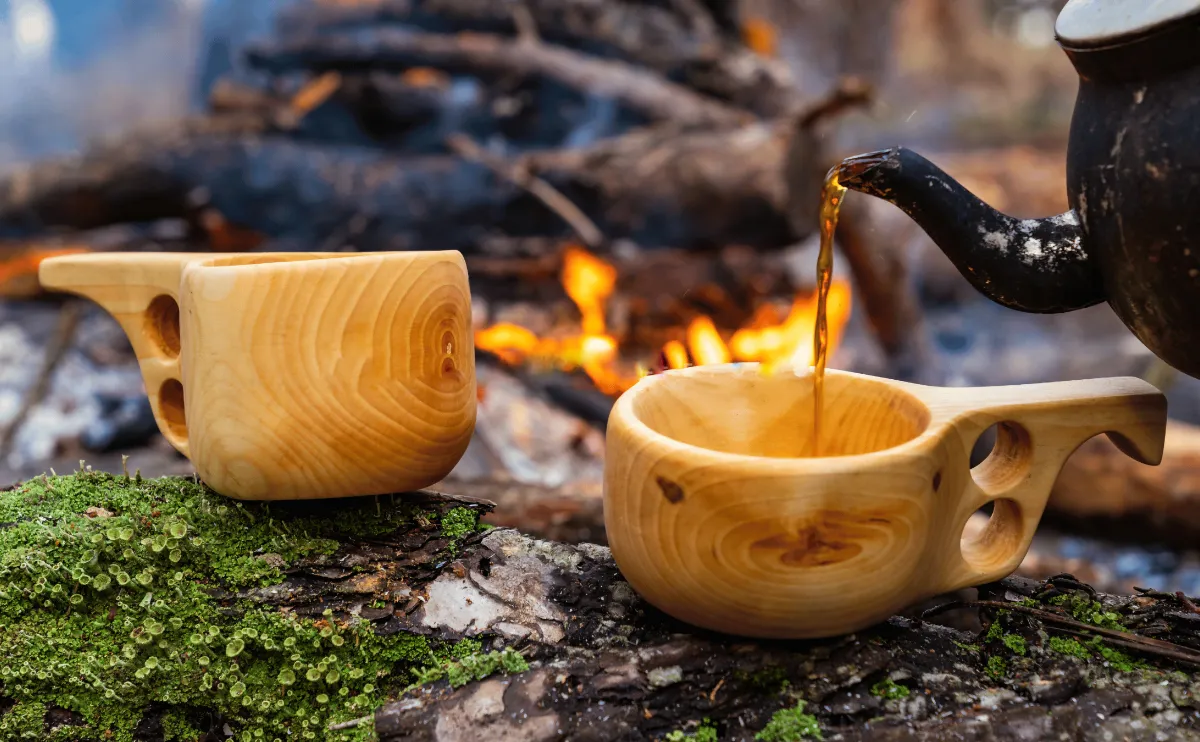
The Origins of the Kuksa Cup
The Kuksa cup has a rich history tied to the Sami people, the indigenous group from Northern Scandinavia. These cups emerged from the needs of their nomadic lifestyle. Originally, they were designed for practical use during activities like hunting, fishing, and outdoor gatherings.
A Multi-Purpose Tool
Kuksa cups were more than just drinking vessels. The Sami used them for eating meals and even picking berries. This versatility made them an essential item in their daily lives, perfectly suited to the demands of their environment.
Craftsmanship and Materials
As part of the Sami handicraft tradition called Duodji, Kuksa cups are carefully hand-carved. They are made from birch burl, a tough and durable material. This choice reflects the Sami’s practical knowledge of surviving in the harsh Arctic climate.
Connection to Nature
The use of birch burl also shows the Sami’s deep bond with the natural world. The Kuksa cup is not just a tool but a symbol of their respect for nature. This connection is a key part of their culture and identity.
Cultural and Spiritual Meaning
Beyond practicality, Kuksa cups carry significant cultural value. They represent ancestral traditions and are often seen as personal items linked to the owner’s spirit. This gives them a special place in Sami life.
A Sacred Role
In some Sami communities, Kuksa cups are used in rituals. For example, shamans might include them in religious ceremonies. This highlights their sacred role and spiritual importance.
The Tradition of Gifting
Gifting a Kuksa cup is a meaningful act in Sami culture. It’s believed to bring happiness to the recipient. Often, the cup’s first use involves a ceremonial “baptism” with coffee and alcohol, marking its entry into service.
A Lasting Legacy
The Kuksa cup blends practicality with deep cultural symbolism. It remains both a survival tool and a treasured piece of Sami heritage. This enduring significance keeps it alive in their traditions today.
Modern Uses and Variations
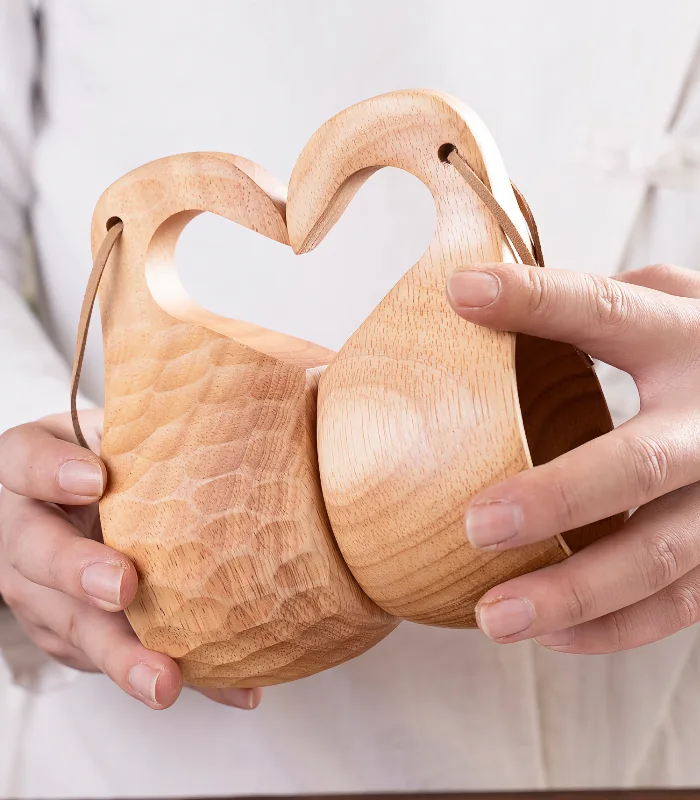
Kuksa cup are cherished by outdoor enthusiasts like hikers and campers for their lightweight, durable, and eco-friendly qualities.
Traditionally, they are hand-carved from birch wood. However, modern variations now include other materials such as Acacia wood.
These modern versions offer styles that range from ruggedly natural to smoothly polished. Despite these changes, each cup retains its cultural heritage.
Originating from Northern Europe, wooden Kuksa cups have gained worldwide popularity. They are especially loved by nature enthusiasts and collectors of handcrafted goods.
Their designs vary widely. Some preserve the traditional aesthetic, while others incorporate contemporary elements to appeal to diverse tastes.
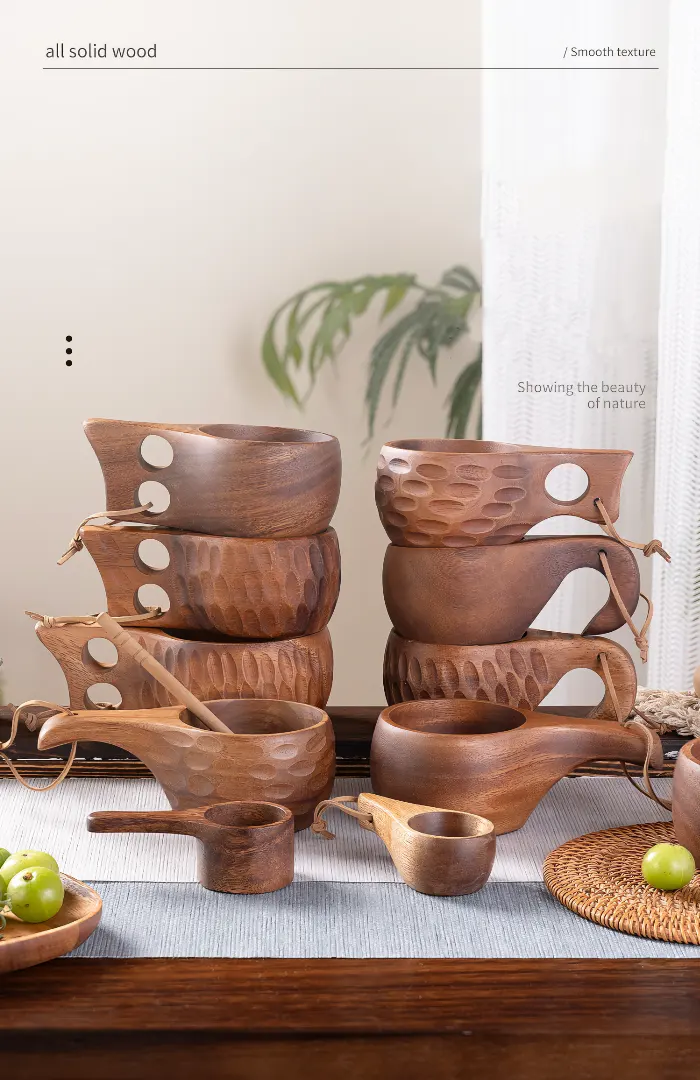
How to make a kuksa cup
You can check out this article for a professional guide on how to make one: https://www.kuksa.shop/en/blog/carving-kuksa
How to Clean and Care for Wooden Cup
To ensure a wooden cup lasts, hand-wash it with mild soap and dry it thoroughly. Regular oiling is recommended to prevent cracking, and it should be kept away from extreme temperatures or harsh chemicals.
How much is a Kuksa cup?
The price of a Kuksa cup can vary depending on several key factors, including the quality of craftsmanship, the type of wood used, the complexity of the design, and the reputation of the artisan or seller.
Typically, handmade Kuksa wood cup range in price from $30 to over $100. However, by incorporating modern techniques and lightweight wood, we’re able to offer these cups—blending both artistry and practicality—for under $20.
Explore some of the finest modern examples on our website. We proudly feature cups crafted from premium Acacia wood and Oak wood, with over ten unique styles available for each material. This combination of tradition and innovation delivers exceptional value and variety for every preference.
For more detailed products, you can check out our Kuksa cups collection.
Conclusion
The wooden cup is far more than a simple drinking vessel; it is a symbol of the Sami people’s culture and traditions in Northern Europe. It showcases exceptional craftsmanship and reflects a profound connection to nature. Whether used on outdoor adventures or in daily life, this traditional cup brings a distinctive charm and warmth that echoes its Northern European origins.
